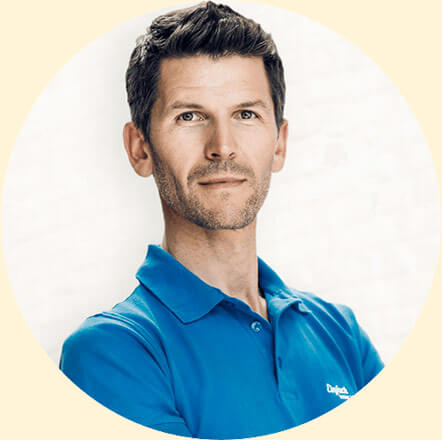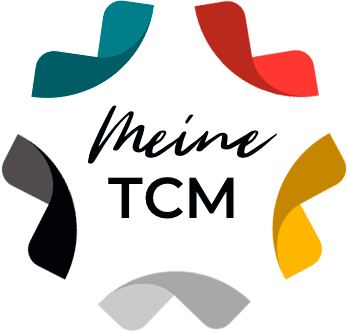
Qi Gong exercises
explained
Exercise description
Starting position is the shoulder to hip width qigong stance. Exhale and let your hands drop down to below your knees. When you reach the bottom, cross your hands and inhale to bring them back up. As you do this, your hands automatically rotate so that you are looking into your palms at face level.
The arms go up even further to above the head. Now, exhaling, they sink down again at the sides of the body. The upper body bends slightly forward and you let your hands sink back down to below the knees.
As you inhale this time, raise your hands upward again as you did for the first repetition. As you exhale, turn your torso to the right and lower your arms back down to your sides. At the end of the exhalation, your hands are again in front of your knees.
The arms are lifted up again and while letting them sink, the upper body turns to the left until the hands meet again at the knees.
Frequently asked questions
I don't feel any stretching anywhere - what is the point of this exercise?
Then simply lift your heels just a few millimeters off the floor and increase this over time. Also try to fix a point on the floor with your eyes. This will make it easier for you to keep your balance.
Can I do the exercise faster because I can't breathe so slowly?
Yes, of course, this is possible and also important. Even though I always point out a conscious and slow execution of the movements, it should never degenerate into "stress". You should never feel like you have too much or too little air. If you feel that you can't breathe as slowly as I show in the video, then feel free to use the Adapt movements to your personal breathing rhythm.

Pro tip from Wolfgang
Do this exercise especially when you feel mentally unclear, confused or like you are in a "fog". Then imagine how you pull this "mental fog" apart with your arm movements and you recognize the shining sun behind it.
Qi Gong Exercise Parting Clouds - Element Fire
Most common errors
The hands are not crossed.
The back does not remain straight when going down.
The timing of the arms is not right, in the rotated version.
Training tips
If possible, train again and again in front of a mirror or record yourself with your smartphone and then study this video for mistakes.
Practice Qi Gong as regularly as possible.
Cultivate the inner attitude that Qi Gong with joy to be exercised, entirely without performance thoughts.
Assistance
What can you do if the exercise is too difficult?
If the twist in the upper body causes problems, just leave that out at the beginning. Do this until you have the movement memorized. Once this movement is memorized, you can easily do it with the upper body rotated.
Meridians
- Heart (Yin)
9 acupuncture points - Small intestine (Yang)
19 Acupuncture points - Pericardium (Yin)
9 acupuncture points - Triple Burner (Yang)
23 acupuncture points
Helps with...
- Shoulder and chest pain
- Heart problems
- Dizziness
- Blood pressure problems
- Night sweats
- Nervousness & restlessness
- Weakness of will






































